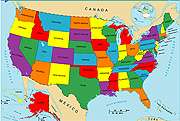Patterns of health insurance coverage among adults vary by state, and these differences may be used to guide efforts to expand coverage under the Affordable Care Act, according to research published online Sept. 25 in Health Affairs.
(HealthDay)—Patterns of health insurance coverage among adults vary by state, and these differences may be used to guide efforts to expand coverage under the Affordable Care Act (ACA), according to research published online Sept. 25 in Health Affairs.
John A. Graves, Ph.D., of Vanderbilt University in Nashville, Tenn., and Katherine Swartz, Ph.D., of the Harvard School of Public Health in Boston, estimated state variations in the percentage of adults who lost health insurance coverage and the duration of uninsured periods.
The researchers found that rates of loss of health insurance ranged from 18 percent of nonelderly adults in Massachusetts and 22 percent in Vermont to almost 50 percent in Florida, Nevada, New Mexico, and Texas. Compared with adults who had private insurance, those who had public insurance were more likely to experience periods of being uninsured, but the duration of uninsured periods was shorter.
"States should tailor their enrollment outreach and retention efforts for the ACA's coverage expansions to address their own mix of types of coverage lost and durations of uninsured spells," the authors write.
More information:
Abstract
Full Text (subscription or payment may be required)
Journal information: Health Affairs
Copyright © 2013 HealthDay. All rights reserved.






















